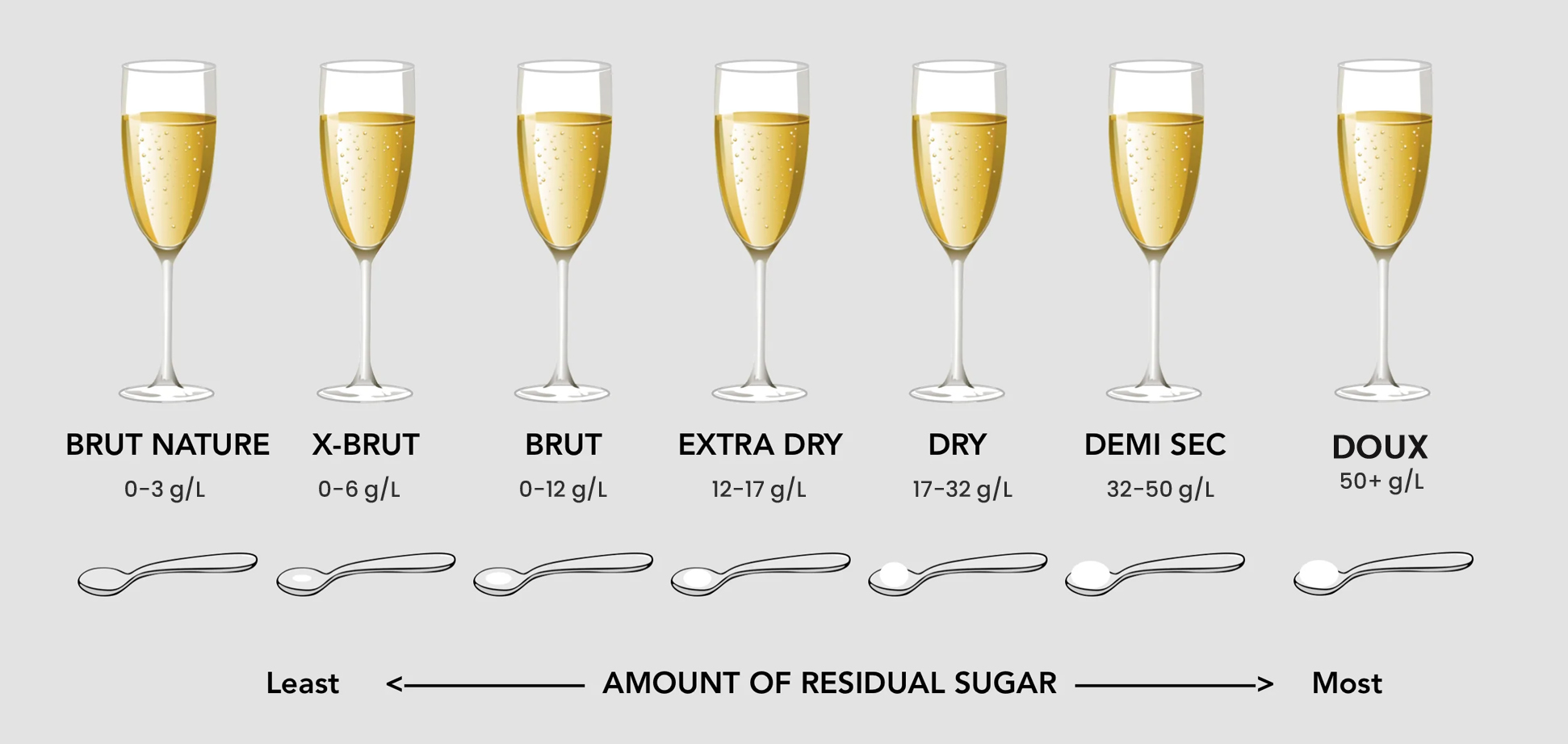What does champagne taste like and how it’s produced?
– Champagne is a true French classic and its flavor reflects the terroir of Northern France’s Champagne region, which includes a cool climate, chalky soils, and high altitude.
– Champagne typically has dominant notes of citrus, almond, and green fruit, as well as floral and sometimes herbal flavors.
– It has a creamy taste and texture and is famously effervescent.
– Quality Champagne has a velvety mouthfeel, a rich aroma of citrus, almond, and cream, and effervescent bubbles.
– The choice of grapes used in Champagne (Chardonnay, Pinot Noir, and Pinot Meunier) contribute to its flavor and aroma profile.
– The sweetness level of Champagne is indicated on the bottle’s label, with terms like Brut Nature and Extra Brut representing low sugar content. Champagne taste can vary depending on the level of sweetness. Here are the different levels of sweetness and their corresponding sugar content per liter:
– Brut: The most popular and fairly dry Champagne, with up to 12 grams of sugar.
– Extra Dry, Extra Sec, Extra Seco: Sweeter than brut, with 12 to 17 grams of sugar.
– Dry, Sec, Seco: Considerably sweeter than brut, with 17 to 32 grams of sugar.
– Demi-Sec, Demi-Seco: A sweeter Champagne, with about 32 to 50 grams of sugar.
– Doux, Sweet, Dulce: The sweetest Champagne, with 50 or more grams of sugar.
– Blanc de Blanc: Champagne made entirely from white grapes, usually 100% Chardonnay.
– Blanc de Noirs: Champagne made from 100% black grapes such as Pinot Noir or Pinot Meunier.
– Rosé: Pink Champagne made by mixing red and white grapes, sometimes with skin contact.
– Expensive Champagne has consistently streaming bubbles due to the process of making quality Champagne.
– Expensive Champagne has a more complex flavor with fruity and floral notes, as well as subtle tastes of vanilla, peach, lemon, and honeysuckle.
– Cheaper Champagne can have sweeter, smoother, and generally less complex flavors.
– Champagne is associated with luxury and is often consumed during celebrations.
– Champagne has a bubbly and popping nature.
– Champagne is an acquired taste that people can grow to appreciate over time.
– Champagne is highly acidic and the bubbles can be strongly felt in the mouth and throat.
– Champagne is ideally served at a temperature of 8-10°C (47-50°F) to preserve its taste and flavor.
– The traditional Champagne flute is the best glass for serving Champagne.
– Champagne can be enjoyed on its own or used in cocktails, such as the mimosa.
– Champagne pairs well with foods such as cheeses, lobster, shrimp, crab, oysters, salmon, poultry, sushi, and salty snacks.
– Champagne can be consumed as a digestif and pairs well with desserts like gelato or ice cream.
